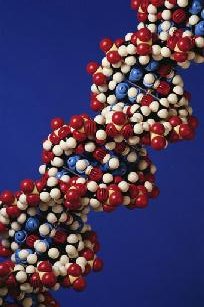
A study conducted at The University of Texas M. D. Anderson Cancer Center has shown that DNA itself can be a catalyst for cancers such as leukemia and lymphoma. Normal DNA is said to become problematic when it twists in the opposite direction to its familiar right hand spiral, thereby becoming what researchers have dubbed Z-DNA.
The team working on the study, appearing in the Proceedings of the National Academy of Sciences, claim that their pioneering research shows that contorted DNA is responsible for rupturing otherwise healthy DNA in mammals. “Our study shows that DNA itself can act as a mutagen, resulting in genetic instability,” says Karen Vasquez, lead author of the study and assistant professor of carcinogenesis at M. D. Anderson’s Science Park Research Division. “The discovery opens up a new field of inquiry into the role of DNA shape in genomic instability and cancer,” Vasquez added.
Vasquez and her team have managed to locate where the most vulnerable DNA sequences are likely to reside, with mutagen Z-DNA found to correspond with genetic “hot spots.” Genetic hot spots are comprised of DNA pools that are the most susceptible to genetic reorganization linked to cancer. The team has already shown this to be true in patients with certain types of cancers, with 90 percent of Burkitt’s lymphoma patients displaying DNA breaks that match regions liable to transform into Z-DNA.
The discovery that DNA can mutate into other shapes is not new to science, but Vasquez’s latest study actually shows how these mutated shapes occur within the cell. Previous studies found that the likelihood of Z-DNA forming at all is subject to the shape of the base pairs themselves. It is said, for example, that a consecutive sequence of CG 14 times over would likely form Z-DNA, while a consecutive sequence of AT would not. Based on these genomic studies, says Vasquez, the percentage of DNA sequences likely to form Z-DNA is 0.25 percent of the genome.
The discovery that rogue DNA can have a mutagen effect on DNA stability has far reaching implications, as the team’s experiments demonstrate. Together with post-doctoral fellow Guliang Wang, Vasquez made pieces of DNA designed to form the Z-DNA shape. The team then implanted these manufactured Z-DNA segments (plasmids) into both bacterial and human cells with the intention of cracking them open at a later date to see what happened to the normal DNA. While the Z-DNA did cause some minor DNA deletions in the bacteria, it caused widespread cell deletion and DNA molecule rearrangement in the human cell. “We discovered that bacterial cells and human cells process the Z-DNA in different ways,” she said. “We aren’t sure why, but we think that the DNA repair machinery may be involved in processing the Z-DNA structure differently in bacteria versus human cells.”
The next step in this research will be for scientists to understand how to prevent or limit certain types of breakages associated with Z-DNA, and why certain areas in the genome, such as “hot spots,” make DNA more prone to transformation while other similar areas do not. “If we could understand the players involved in this process, we might be able to prevent the generation of these breaks,” says Vasquez. “For example, if certain types of cell stress lead to breaks, we might be able to find ways to reduce those stresses and prevent breaks.”









Comments are closed.